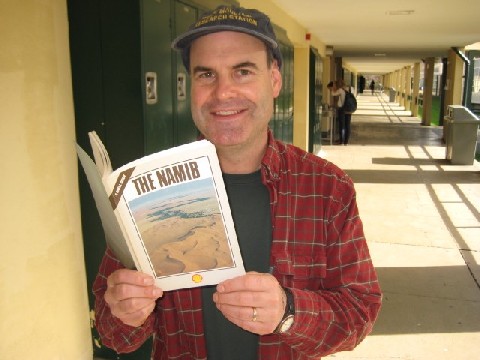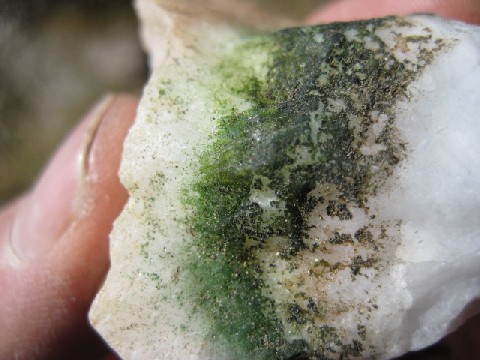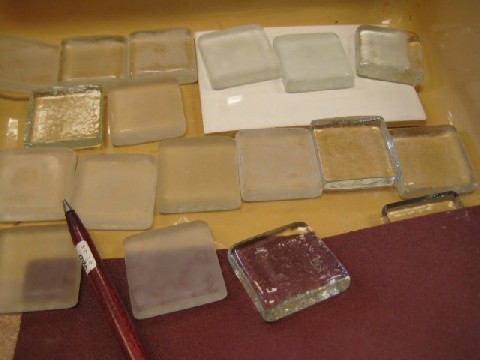I am going to Namibia in April! Specifically, to the Namib Desert near Walvis Bay. I'll be there from April 18 to April 25.

Why? And what does this have to do with the polar regions? If you remember my post on this site from March 23 2009, you'll remember that deserts and the polar regions have a lot in common.
Both are extreme environments that appear hostile to life at first, but are full of hidden surprises. Both have beautiful, other-worldly landscapes, remote and empty. Both are fragile environments sensitive to climate change. And, both have hypolithic cyanobacteria.

Cyanobacteria are some of Earth's oldest, simplest and toughest microorganisms. They live in lots of places, not just in extreme environments. However, wherever conditions get really tough you find them under rocks ("hypolithic" = "under rocks.") Hypolithic cyanobacteria are best known from the Arctic (Devon and Cornwallis Islands) and the Antarctic Dry Valleys.
They prefer translucent rocks like quartz and marble. The rock acts like a little greeenhouse window, transmitting some visible light but blocking a lot of the harsh ultraviolet light that can harm living cells. The rocks also trap moisture under them, and protect the cells underneath from extremes of heat and cold.
There's a lot that isn't known about hypoliths. Their growth is difficult to quantify, since it responds to the contours of each rock. However, if you place pre-cut rocks of standardized dimensions in extreme environments, you can rigorously control for variables like light transmission, surface composition and roughness, starting inoculations, and time.
Starting this year, Sir Francis Drake High School will begin to deploy an array of artifical hypoliths in extreme locations around the world. Each array will be approximately one square meter in area and will include 60 or more stones. The stones will be glass and/or marble tiles from building supply stores. They will have a standard length, width and thickness. Variables will include:
Carbonate (marble) vs. silicate (glass), Light transmissivity (3 levels?), Innoculated with local cells vs. sterile when placed into the environment, Rough (sanded) surface vs. factory smooth.

Namibia will be the first opportunity for us to do this. We also plan to do this in California's White Mountains (near the Nevada border) and Devon Island (Canadian Arctic) this year. In future years we might add the Mojave Desert, the Atacama, the Sahara, Australia, and the Antarctic Dry Valleys.
With me in Namibia will be an international crew: Dr. Chris Mckay of the NASA Ames Research Center in California, Dr. Donald Cowan of the University of the Western Cape (South Africa), Dr. Henry Sun of the Desert Research Institute (Nevada) and Dr. Charles Cockell of the Open University (United Kingdom), among others. All of these are veterans of Antarctica's Dry Valleys.
This expedition is part of NASA's Spaceward Bound Program, and most of the scientists attending have an interest in Astrobiology. Astrobiology is the study of life in extreme environments in order to understand how to find life on other planets, like Mars.
Will I post journal entries and photos from the field? Of course!


Comments